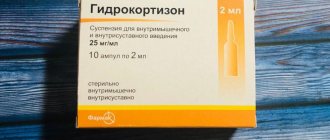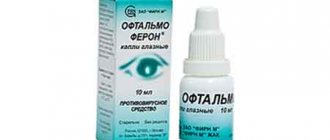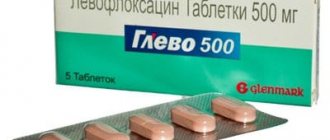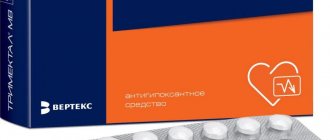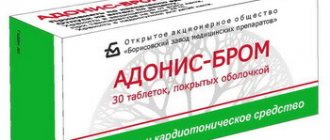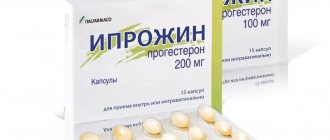Magnesia or Magnesium sulfate is a broad-spectrum drug that contains magnesium salt of sulfuric acid.
The drug has antiarrhythmic, vasodilator, anticonvulsant, sedative, antispasmodic and diuretic effects. And this is not a complete list of the medicinal properties of Magnesia.
For what purposes is it prescribed and can the drug be injected intramuscularly? How long does the course of therapy last and how to properly use the product in ampoules and powder?
Composition, release form and packaging
Magnesia (sulfuric acid salt) is a chemical compound. Found naturally in seawater. Release form: whitish dry powder (briquettes) by dissolving with water.
Packing – 5,10,25 g for oral use, ampoules (5.10 ml) for injection.
Contains:
- active magnesium salt of sulfuric acid;
- auxiliary component – purified injection water.
It is possible to add other impurities. Products with magnesium may contain different percentages of the active salt.
The Latin name of the drug is Magnesium sulfate.
Manufacturers: pharmaceutical factories - Kaliningrad, Ivanovo, St. Petersburg, Pyatigorsk, chemical farm Belarus, Borisov pharmaceutical plant.
Features of the drug
Magnesia injections are magnesium salt obtained from sulfuric acid. The powder is made in the form of colorless crystals that easily erode in air. Magnesium salt is water-soluble, but it is completely insoluble in alcohol.
Magnesia has anticonvulsant, sedative, vasodilating, analgesic effects. This remedy is widely used in gastroenterology, cardiology, and neurology. Magnesia is a pure preparation without additional impurities and components. In some cases, burnt magnesia is used in medicine to neutralize harmful substances that have entered the body.
The drug acts for 3-4 hours and is then excreted from the body through the kidneys.
pharmachologic effect
The medicine has a choleretic effect on the receptors of the duodenum, providing a laxative effect. Intestinal absorption is quite low, but osmotic pressure increases, feces become thinner, and peristalsis normalizes.
Magnesia can be considered an antidote, applicable for poisoning with heavy potassium, barium, and metal salts. Effectiveness is observed after two 2.5 hours and up to 7 hours.
Magnesium sulfate with sulfuric acid, magnesium salt has a positive effect on the body, solves many health problems, promotes:
- vasodilation;
- providing analgesic, antispasmodic, diuretic, antiarrhythmic effect;
- weakening of the smooth muscles of the uterus;
- expulsion of bile from the intestines;
- weakening of peristalsis, stool, and neuromuscular muscles;
- liquefaction of feces.
Use in large doses can have a narcotic, hypnotic effect.
Calcium channel blocker - magnesium sulfate, displacing stagnation from the connecting areas, regulates metabolism and muscle excitability, prevents the flow of calcium through the intestinal membranes, relieving muscle cramps.
This is how acetylcholine is quickly released from synapses in muscles.
When administered intravenously after 0.5-1 hour, a rapid systemic effect is observed. Absorption of the drug by the kidneys is up to 20%. The rate of excretion is directly proportional to the degree of glomerular infiltration.
Magnesia quickly passes into breast milk, also through the blood-brain barrier. The percentage can be 2 times higher than in the blood.
Even with a one-time use, the medicine helps to weaken smooth muscles , lower blood pressure, increase diuresis, and provide an anticonvulsant and antiarrhythmic effect.
Lead to a decrease in the excitability of cardiomyocytes.
Indications for use
The medication is prescribed for the treatment of many problems in women, it helps:
- relieving muscle cramps;
- normalization of heart functions;
- providing a calming effect;
- acceleration of metabolism.
Main indications for use:
- cholecystitis;
- cholangitis;
- cystic seizures;
- risk of miscarriage;
- premature birth;
- biliary dyskinesia (tubage);
- constipation;
- gestosis;
- urinary retention;
- barium poisoning;
- bowel cleansing on the eve of surgery;
- hypotonic crisis with swelling of the brain;
- eclampsia.
Parenteral administration of magnesium promotes:
- providing a calming effect;
- relieving seizures and signs of arrhythmia;
- regulation of metabolic processes;
- decrease in blood pressure;
- smoothing muscle tissue.
Magnesia can be used to replenish the body with magnesium for the prevention and treatment of arrhythmia, to improve the effectiveness of anesthesia, and to eliminate toxicosis during pregnancy in the 2-3 trimester.
Contraindications for use
Main contraindications:
- oncology (malignant, benign tumor);
- kidney failure;
- tuberculosis;
- individual intolerance to the active component;
- excessive hypersensitivity to magnesium sulfate;
- rectal bleeding;
- dehydration;
- arterial hypotension;
- bradycardia;
- prenatal period a few hours before birth;
- intestinal obstruction;
- acute viral course of infection.
Instructions for use and dosage regimen
Instructions for use depending on the disease:
- If you are concerned about spasms, convulsive syndrome , hypertension, eclampsia, then magnesium ampoules (25%) are used intravenously, intramuscularly 20 ml once, and so on up to 4 times a day.
- To stop seizures in children , 0.2 ml per 1 kg of weight (20%) of the solution is administered. For acute poisoning, the average dose is 10 ml. Used as a choleretic composition - 20 g per 100 g of water, 3 times a day, preferably food.
- If you need to relieve signs of poisoning with heavy metal salts , then use magnesia - orally, 25 g per 1 glass of water.
- Often the medicine is prescribed before duodenal intubation with a dosage of 150 ml (25% solution).
The best form of medicine as a laxative is powder. The permissible dose is 25-30 g by diluting with water (100 ml), drinking at night (in the morning) on an empty stomach.
An enema is given if constipation is a concern by adding 100 ml of water to the powder to provide a laxative effect.
Reference! This remedy can be used episodicly or as a long-term treatment.
Features of application
Each form of this medicine has certain features for use. It is recommended to read the instructions before use.
For children and pregnant women, the dosage and course of treatment are selected directly by the attending physician, taking into account the existing problem, weight, age, and diagnostic indications.
- If it is necessary to use the medication as a laxative for constipation , then the permissible dose is 30 g per 100 ml of water.
- As a choleretic drug during a hypertension crisis, up to 20 ml is administered.
- It is better to give a suspension to children. The permissible dosage is 20 g and washed down with water (0.5 cups) 3 times.
- Magnesia in injections is used to relieve unpleasant symptoms of the disease. Prescribed for intravenous administration. Concentration - 25% with a duration of infusion of the composition of 40-45 minutes.
- For poisoning, hypertensive crisis, convulsive syndrome - intravenous administration (10% solution), eclampsia - 20 ml (25% solution) up to 4:00 times a day.
- It is possible to inject magnesium in combination with painkillers.
Pills
The drug in tablets containing active ingredients and vitamins (B1, B3) is used to compensate for the lack of magnesium. The recommended dose is 340 mg 2 times a day.
Purpose of the tablet form of magnesia:
- convulsions;
- heart problems;
- nervous tension;
- stress;
- spasms of smooth muscles.
Suspension
The use of magnesia in the form of a suspension with laxative and choleretic properties is permissible for children in case of poisoning, to dilute stagnant feces in case of impaired peristalsis in order to quickly bind magnesium sulfate with toxic substances (barium, lead, mercury, arsenic) and remove it from the body.
- To relieve VSD attacks, it is possible to administer intravenous or intramuscular injections. Results can be expected after 10-20 minutes and last up to 2-3 hours.
- For adults with convulsive syndrome, hypertensive crisis, the drug 25% is administered slowly, for children with seizures - no more than 0.3 ml per 1 kg of weight by administering a 20% solution intramuscularly.
- For acute poisoning, constipation, biliary dyskinesia, an acceptable dose is powder diluted with water (20 g per 100 ml). Adults are allowed to drink up to 30 mg once at night or on an empty stomach.
Reference! It is not recommended to carry out procedures more than once a month without a doctor’s prescription. When using magnesia as an enema to relieve peristalsis or in case of poisoning, the dosage should not exceed 20 g per 100 ml of water once a day.
Tubazhi with magnesia
Tubage - washing of the bile ducts.
In combination with magnesium, it helps to increase the passage of bile through the bile ducts, eliminate congestion, and prevent the formation of stones in the bladder.
A similar procedure is carried out in a medical institution or at home independently, but as prescribed by the treating specialist after an examination for indications for use:
- bile obstruction in the duodenum;
- bile duct dyskinesia;
- retention of bile in the gallbladder.
Restrictions on the use of tubage are required when:
- intestinal colic, obstruction;
- dehydration;
- low pressure;
- excessive concentration of magnesium in the blood;
- chronic internal diseases.
Carrying out tubage involves the use of magnesia (mixture) + boiled water. The course of treatment is 1 time every 7 days. An acceptable course is up to 15 weeks. Before tubage, patients need to go on a diet, exclude marinades, saltiness, seasonings, and smoked foods from the diet. You can only eat porridge and baked vegetables (fruits).
The tubage procedure is as follows:
- dissolve magnesia (1 tbsp) in boiling water (250 ml), non-carbonated mineral water;
- refill the enema;
- lie on your right side;
- apply a bottle of warm water (a heating pad) to the area (where the liver is);
- calm down, lie down for a while;
- administer an enema;
- wait 1.5 hours to achieve positive results, which can be seen by the color of the stool after the first bowel movement.
First, a green color will begin to appear, which means the procedure was successful. If new problems with emptying arise, the procedure can be repeated, but following the attached instructions for use of magnesium.
After the end of the tube, do not neglect your diet. Immediately have a snack with a salad of raw carrots (apple), seasoned with sunflower oil.
Tubazh is prescribed for stagnation of bile, dyskinesia of the biliary tract. Contraindications: intestinal obstruction, appendicitis, dehydration.
Use for colon cleansing
Today, magnesium for intestinal cleansing is often prescribed by doctors, but you can do it yourself at home after examination and consultation with a specialist.
The method is suitable for cleansing the intestines by administering magnesium sulfate , no more than once a month to avoid irritation of the mucous membrane. It is enough to carry out 2-3 procedures to eliminate constipation and normalize intestinal motility.
Many people experience difficulties with bowel movements when fecal particles accumulate in the walls of the rectum and colon, preventing the natural passage of feces out. In this case, toxic substances begin to flow throughout the body.
To soften the stones and eliminate this problem, it is worth performing an enema. Take magnesia powder (30 g), dissolve in boiling water (1 glass), insert into the anus. The effect is observed after 1 hour, when toxins begin to leave the intestines along with the stool.
Reference! You should not give enemas with magnesium frequently without a doctor’s prescription. There may be no side effects, but do not neglect possible contraindications. In addition, the procedure for cleaning the intestines with magnesium is not suitable for everyone.
Magnesia in physiotherapy
- Magnesium sulfate is used to dilate blood vessels . Prescribed by a doctor during physiotherapeutic procedures as an antiarrhythmic drug by intramuscular injection to relieve spasms and dilate blood vessels.
- Magnesium sulfate helps in the treatment of papillomas and warts when applied externally by applying compresses of diluted powder with water. So it is enough to dilute 20 g of dry powder in 1 liter of water, moisten a gauze cloth, and apply it to the affected areas.
- It is recommended to carry out procedures 2 times a day . The course of treatment is 3 weeks. Warts and papillomas will gradually begin to dry out and fall off.
- Magnesia goes well with electrophoresis. Used in the treatment of dermatovenerological diseases. The treatment regimen and dosage are selected only by the attending physiotherapist.
Using magnesium for weight loss
Magnesium is not the best medicine if you want to lose weight.
However, it can be added to baths or taken orally in powder form to empty the bowels and enhance digestive processes.
The mixture is made in the same proportions as for the treatment of constipation.
To add magnesia powder to the bath, mix it with salt (sea, ordinary) and add to warm water.
This has a good effect on the condition of the skin, expels toxins from the body, and improves mood.
Recipe:
- Mix 4 bags of dry magnesia with salt (0.5 g);
- pour into hot water (T-40-45 g);
- take baths for up to 20-30 minutes, and so on up to 3 times a week.
On a note! This method cannot be called effective in the fight against extra pounds. Additionally, you need to do physical exercise, follow a diet, and also take into account contraindications (oncology, infectious process, hypothyroidism, diabetes mellitus, epilepsy, chronic diseases during exacerbation, heart failure).
According to many patients, this is an emergency method for losing weight. It is better to choose other alternative options.
How to take Magnesium Sulfate for weight loss
Before dieting, it is necessary to cleanse the intestines. Magnesium sulfate in this case is intended for one-time use. This method should not be used frequently, since the active substance irritates the gastric mucosa and can ultimately cause dysbacteriosis.
Those who want to lose weight need to add 200 g of powder to the bath. This bath should be taken for 20 minutes before bedtime. The course contains no more than 15 such procedures. It should be done no more than twice a week. The effect is achieved as follows: unnecessary fluid leaves the body, swelling disappears, and metabolic processes improve.
Side effects
If you neglect the instructions for using magnesia and overestimate the dose, there may be cases of overdose and side effects:
- vomit;
- dyspnea;
- hyperhidrosis;
- uterine atony;
- polyuria;
- feeling of dryness, thirst;
- bloating;
- flushes of blood to the face;
- confusion;
- convulsions;
- arrhythmia from taking magnesium ampoules;
- reduction in blood pressure, which is important for hypertensive patients to take into account when dosages are violated;
- spastic pain;
- impaired knee reflex;
- difficulty breathing;
- deterioration of blood pumping by the heart.
When magnesium sulfate in the blood reaches more than 12 mol/l, premature cardiac arrest is possible due to the intense effect of the active component on the central nervous system. Severe thirst, sweating, bradycardia, and confusion may occur.
When the blood norm exceeds 5 mol/l, the pressure sharply decreases, confusion of speech, hyperhidrosis, nausea, loss of strength, and vomiting are observed. In some cases, it is impossible to do without taking emergency measures to eliminate the side effects of magnesia: hemodialysis, artificial ventilation.
Use during pregnancy and breastfeeding
Magnesium sulfate is often prescribed to pregnant women, although the effect is significantly higher than the possible risks to the fetus. Magnesia is used to prevent miscarriage and premature birth.
Helps eliminate uterine hypertonicity. However, overdoses are excluded. The medicine is prescribed exclusively by the attending physician for constipation, gestosis, severe swelling.
The permissible dosage for pregnant women is 520 mg by intravenous administration (25% solution) in injections per 1 liter of solution with slow administration.
Attention! This medicine has a pronounced diuretic effect. Requires careful use and only when checking diastolic pressure with a norm of 100x130 mm/Hg/st.
Magnesium therapy is prescribed to women after childbirth 1-2 days later for convulsions and a sustained decrease in blood pressure. During the birth process, the use of the drug is extremely contraindicated due to a sharp decrease in the contractile activity of the myometrium.
Magnesia has a pronounced diuretic and laxative effect. It is not recommended for use by women during lactation. But, as an alternative, you can use the powder to add to water and take warm baths.
Reviews
| Most of the feedback from people who have used Magnesium sulfate for weight loss is that the drug really works. It promotes complete and high-quality bowel movement. However, in some people the laxative effect develops very strongly, causing abdominal pain. Therefore, the drug should be used very carefully and only in case of urgent need. Another part of the reviews is negative. Women who used magnesium sulfate for weight loss suffered, at a minimum, from severe diarrhea. Even death cannot be ruled out due to possible dehydration after taking the drug. Therefore, its independent use to achieve aesthetic goals is not recommended. |
Magnesia for children
The main purpose of magnesium for children is constipation. Acceptable form is powder by injection IM, IV.
For pathological diseases, it is possible to perform enemas using powder, calculating the child’s weight - 1 g per 1 kg. Doses directly depend on the age of the child. So, for constipation, the powder must be diluted with water - 6 g per 100 ml of warm water for children under 10 years old, for children under 15 years old - 30 g.
An enema is administered into the rectum to relieve spasms and pain.
If used for children with hypertension, the dosage is selected exclusively by the attending physician.
Important! You cannot give medicine to a child together with other drugs (vitamins); you must first consult a doctor. Overdoses and incompatibility of components must be taken into account.
Advantages and disadvantages of magnesium in the treatment of stool problems such as constipation
Magnesia powder is easy to use, its properties allow you to cope with defecation difficulties, improve the functioning of not only the digestive organs and kidneys, but also other body systems. The powder contains no additional substances or impurities.
Magnesia solution taken orally:
1 quickly eliminates constipation without causing discomfort;
2 well liquefies stool, acts as a stimulator of motility and peristalsis;
3 does not cause irritation of the mucous membrane of the intestinal walls;
4 acts gently, with guaranteed results.
Magnesia for constipation is an effective remedy, but its disadvantages should be taken into account:
1 fights the consequences, but not the causes, of constipation, therefore it is used when it is necessary to quickly eliminate difficulties with bowel movements;
2 by promoting the excretion of sodium and potassium ions, it can upset the balance of electrolytes, threatening dehydration;
3, when taken regularly (2-3 months), the cardiovascular and urinary systems work under increased load;
4 Do not use the medicine for local damage to the rectum (cracks, inflamed hemorrhoids).
Additional intake of magnesium into the body has a beneficial effect on the functions of the heart muscle, stimulates hair growth, and smoothes the skin.
Drug interactions
The instructions say that magnesia is compatible with some drugs, but for example, with high blood pressure it can lead to a change in the effect.
When used together, the effect may be reduced or enhanced in combination with other medications.
Combined use with muscle relaxants will have a peripheral effect, enhancing the effect.
When using magnesium sulfate with Nifedipine, muscle weakness may occur.
Phenothiazine will reduce the effect of magnesium sulfate.
Ciprofloxacin – to increase the antibacterial effect.
Reference! You should not take magnesia together with drugs such as: muscle salts, hydrocortisone, barium, calcium.
Complete incompatibility is observed with Phenothiazine, Nifedipine, Streptomycin. An overdose of magnesia is possible when used with calcium chloride or gluconate.
The drug is incompatible with ethanol (alcohol), bicarbonate, and alkali metals. When used with cardiac glycosides, cardiac conduction may deteriorate or muscle function may be blocked.
special instructions
Magnesium sulfate is prescribed with caution for myocardial damage, heart block, respiratory diseases, chronic renal failure, acute inflammatory diseases of the gastrointestinal tract and during pregnancy.
As part of complex treatment, the drug can be used for epilepsy to relieve status epilepticus.
An overdose of magnesium sulfate causes depression of the central nervous system. The antidote is calcium preparations - calcium gluconate or calcium chloride.
Medicinal analogues
The following have a similar composition and active ingredient:
- Cormagnesin , a vasodilating drug with magnesium properties. Prescribed for deficiency of this mineral, depression, muscle cramps, paresthesia. This is an important intracellular cation that takes an active part in 300 enzymatic reactions, regulating cell homeostasis, normalizing neuromuscular reactions, has a cholinergic effect on nerve endings, leading to a relaxation effect, increasing diuresis, lowering blood pressure. Cost - 615-650 rubles.
- Magnesium sulfate , a laxative to relieve constipation and intestinal problems. It has antispasmodic, vasodilating, choleretic, laxative, hypotensive effects. In complex treatment it is used as a symptomatic medication. Indicated for use in cholecystitis, heavy metal intoxication, inflammation of the biliary tract, chronic constipation, convulsions, ischuria, and also for children for gentle bowel movement. Price for powder 10g - 3-8 rubles , 10 ampoules (5 ml) solution 18-22 rubles.
- Magnesium sulfate Darnitsa with antispasmodic, anticonvulsant, sedative effects. Indicated for use in acute cholecystitis, cholangitis, spasms, convulsions, urinary retention, constipation, lack of magnesium in the body, hypomagnesemia, threat of premature birth. Contains active magnesium sulfate, heptahydrate. Price - 120 rub.
- Dibazol is a vasodilator and antispasmodic. Cost in tablets - 20 rubles. , in solution - 50 rub. The drug is aimed at reducing pressure, dilating blood vessels, accelerating synaptic transmission of impulses in the spinal cord, spasm of smooth muscles and blood vessels, and eliminating renal colic. Analogues: Dibazol Darnitsa, Dibazol UBF, Bendazol. Price - 180 rub. per package.
- Pentoxifylline is an antispasmodic with antiaggregation and anticonvulsant effects to dilate blood vessels and improve blood microcirculation. Indicated for bronchial asthma, otosclerosis, viral neuroinfection, endarteritis obliterans, and impaired blood supply to the periphery. Release form – solution, tablets according to a doctor’s prescription. Analogs: Pentoxifylline, Trental. Cost: tablets – 85-130 rubles. (60 pcs), ampoules (2% 5 ml) - 40 rub. for 10 pcs.
- Magnesium sulfate has an anticonvulsant, choleretic, antispasmodic effect to displace calcium, due to its antagonistic properties. Leads to a decrease in quantitative acetylcholine, prevents calcium ions from passing through the presynaptic membrane. Indications for use: dyskinesia of the gallbladder, duodenal intubation, cholecystitis, cholangitis, constipation, poisoning with salts, lead, arsenic and mercury. The acid is applicable for tubing and blind probing. Cost - solution (250 ml) - 30 rubles. , powder (25 mg) - 35 rub.
Dibazol
Cormagnesin
Magnesium sulfate Darnitsa
Pentoxifylline
Magnesia is widely used for many diseases, but has some contraindications. When using it, it is important to take into account the diagnosis. Dosages are selected individually, taking into account the general well-being of patients.
The injection concentration should not be higher than 25%. When administered intramuscularly, the powder is additionally diluted with water. When administered intravenously, dilution with 5% sodium chloride is acceptable.
Injections may lead to unpleasant sensations (pain, hot skin at the injection site, burning sensation), but as the infusion progresses, the symptoms should quickly subside.
Although you should not expect a miraculous recovery in a matter of hours when used independently, since the body’s reaction to this substance can be purely individual.
Especially pregnant women and children need to be tested first. Only a doctor can prescribe effective treatment with this drug, in particular the dosage. Self-medication is excluded, otherwise you can cause special harm to the body.
